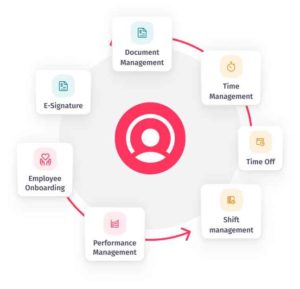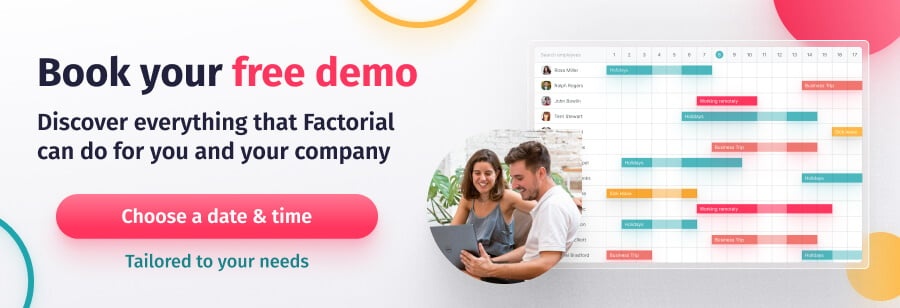Table of Contents
What is an Org Chart?
‘Org chart’ is shorthand for ‘organisational chart’. An organisational chart is a visual representation of how the individuals in an organisation work together. It illustrates the different roles involved, the responsibilities of those roles and the relationships that exist between them.
Businesses use different types of organisational charts, depending on what they use them for and how they want to present their organisation’s business structure internally and externally.
Key elements that are usually represented in an org chart are:
- Type of role
- Different departments
- Reporting relationships
- Delegation protocols
- Chain of command for decision-making.
Why is an Org Chart Essential for Business Success?
Creating an org chart can take time, especially when it stimulates thinking and discussions about what kind of structure is most suitable for the organisation and its goals. However, it is a worthwhile investment. Having an up-to-date org chart benefits your business in the following ways.
- Builds unity: when everyone in an organisation can see where they fit in, they are more likely to feel valued and part of a team.
- Improves communication: employees can easily see who does what and can find the right person to talk to when they have an issue, an idea or need to collaborate with others.
- Creates a better workflow: a clear diagram illustrating how roles interlink, where responsibilities lie and who is accountable for what aspects of the business ensures the right people have the correct information to do their jobs.
- Reduces uncertainty: a document that allows people to understand where they fit into the bigger scheme of a business helps to create a sense of security and belonging, which can reduce anxiety and help individuals flourish in their roles.
- Helps with strategic plans: by providing a quick overview of staffing numbers and the links between different departments and roles, org charts allow senior leadership to have a good understanding of the characteristics, benefits and limitations of their workforce. Regularly reviewing the org chart helps ensure the people side of the business is fit for purpose.
- Helps onboarding: when new members of the workforce can easily see where their role fits into a company structure, they are more likely to hit the ground running and start contributing to the business goals.
- Supports a flexible approach: as organisations become increasingly flexible in how they work, having an up-to-date org chart is crucial in terms of individuals in teams knowing who is doing what and how they need to work together as the company pivots direction

Types of Org Chart
There are many different types of organisational charts. If you are starting to create org charts for your business, it helps to think about why you want an org chart and what you want it to show, as well as taking in the bigger picture of the business goals, industry standards and the existing culture of the company.
For example, if you want everyone to feel included and build unity, it needs to show all the roles involved. If clarity over responsibility is a priority, you must ensure the company’s chain of command is transparent. And if you want to be seen as egalitarian and inclusive, your org chart should be flat to represent everyone making an equal contribution.
The following are six of the most common types of org charts:
1. Hierarchical Organisational Chart
Hierarchical org charts (also known as a top-down or vertical organizational chart) are usually a pyramid with higher management at the top and middle management and lower-level employees at the bottom.
2. Flat Organisational Chart
A flat org chart may also known as a horizontal org chart. It represents all employees on the same level, with few or no middle layers. These charts are often used for smaller businesses where a short chain of command works well.
3. Divisional Organisational Chart
Divisional org charts can be helpful for businesses with departments that have control over their resources, for example, when there are divisions based on different products, markets or geographical locations.
4. Matrix Organisational Chart
Matrix org charts use a grid-like chart with horizontal and vertical lines to illustrate how cross-functional teams work together and are often used for specific projects. A matrix organizational structure can be more complicated to understand than other org charts, but many people find they illustrate a more dynamic view of an organisation.
5. Functional Organisational Chart
Functional org charts look similar to hierarchical org charts as they put the highest level in the chain at the top. However, functional charts use specific roles or skills to organise the business rather than focusing on seniority and where a role fits in the hierarchy.
6. Network Organisational Chart
Network org structures orientate themselves around a skill or specialisation. However, they differ from functional org charts because they show links and clusters across teams (often including external parties such as freelancers, suppliers and subcontractors), demonstrating how teams can work together cross-functionally to meet a specific need for the business.
Who is Responsible for Managing a Company Org Chart?
The chief executive officer (CEO) manages the company’s org chart. However, they will work closely with their colleagues in Human Resources, who are usually responsible for maintaining the chart by keeping it up-to-date, relevant and accessible.
Creating an organisational chart is not as simple as making a visual representation of how the people in your business work together. It is also a chance to think carefully about how the leadership want the business to work, what your collective vision for the company’s culture is and how decisions should be made. When we look at these factors, we can understand how vital HR’s input is when creating and maintaining organizational charts, so let’s take a closer look at the role of HR in creating an org chart.

The Role of HR
When it comes to creating and maintaining org charts, HR are involved in the following ways:
1. Information Sharing
HR has the data on who is employed, in what role and with what reporting lines. They also understand company culture and the strategic goals of the business.
2. Knowledge of Organisational Development
HR understands that businesses need to align their people, processes and internal culture with the company’s goals and can bring expertise about different strategies and structures that can be used.
3. Ownership of People Processes and Documentation
An organizational chart is only as good as the data that feeds into it. HR plays a pivotal role in ensuring that a company has up-to-date information on its people and that the right processes are being followed to ensure the company’s structure aligns with both its organizational chart design and its objectives.
4. Change Management
Suppose an organisation needs to change its structure and create a new org chart. In that case, HR helps to manage the transition by understanding the roles required, recruiting or offboarding individual employees and ensuring communication is prioritised.

Org Chart with Factorial
If you have ever struggled to create an organisational chart in Word or PowerPoint, you will know how hard it is to complete the task in a way that creates a clear and easy-to-follow diagram.

Here at Factorial, we’ve taken the pain away from the process with our free organisational chart creator software that helps you create an org chart using the information you have already provided in terms of roles and reporting lines. Our programme also automatically updates organization charts every time you add a new employee Factorial.






